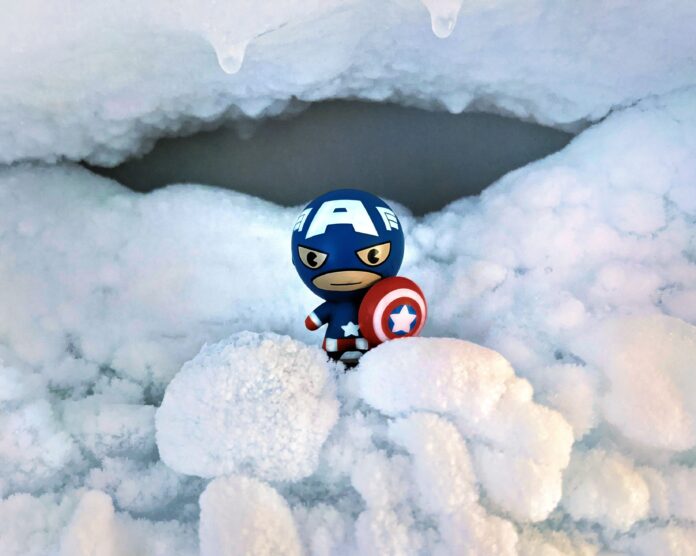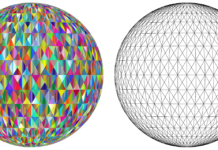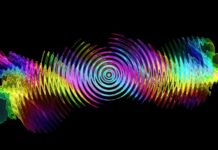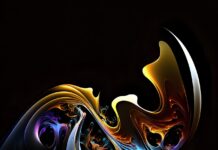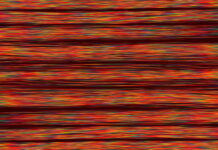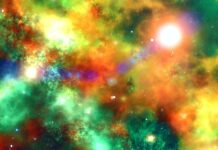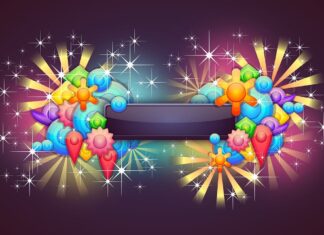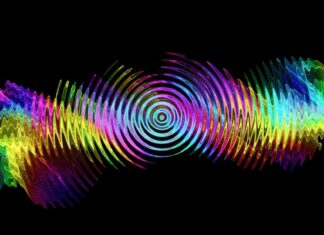Marvel Comics is a renowned American comic book publisher and multimedia entertainment company that has been captivating audiences since its inception. It has become a dominant force in the comic book industry, known for creating a vast universe of superheroes and supervillains that have become iconic pop culture figures. Marvel Comics has not only left an indelible mark on the comic book landscape but has also successfully expanded into various media platforms, including movies, television shows, video games, and merchandise.
Marvel Comics was founded in 1939 by Martin Goodman under the name Timely Publications. In the early years, Marvel Comics produced a diverse range of genres, including superhero, western, horror, and mystery comics. However, it wasn’t until the 1960s that Marvel revolutionized the industry with the creation of the Marvel Universe as we know it today. This era, known as the Marvel Age of Comics, introduced a new breed of flawed and relatable superheroes that resonated with readers.
One of the most significant contributors to Marvel Comics’ success during this period was writer-editor Stan Lee, often referred to as the “father of Marvel.” Collaborating with talented artists like Jack Kirby and Steve Ditko, Lee co-created some of Marvel’s most iconic characters, including Spider-Man, the X-Men, the Fantastic Four, Iron Man, Thor, Hulk, and many more. These characters were characterized by their humanity, personal struggles, and complex relationships, setting them apart from the more traditional and idealized superheroes of the time.
Marvel Comics’ storytelling style and interconnected universe set the stage for intricate plotlines and crossovers, captivating readers and keeping them invested in multiple ongoing series. Characters from different titles often crossed paths, leading to team-ups, epic battles, and shared universes. This narrative approach created a vast and immersive world that encouraged readers to explore different corners of the Marvel Universe.
In 2008, Marvel Studios, an entertainment subsidiary of Marvel Comics, embarked on an ambitious cinematic journey with the release of “Iron Man,” marking the beginning of the Marvel Cinematic Universe (MCU). The success of the MCU further elevated Marvel Comics’ popularity and introduced its characters to a global audience. Marvel Studios has continued to produce blockbuster films that interconnect and expand the Marvel Universe, culminating in massive crossover events such as “Avengers: Endgame” and “Spider-Man: No Way Home.”
Aside from the Marvel Cinematic Universe, Marvel Comics has ventured into television with critically acclaimed shows like “Daredevil,” “Jessica Jones,” “Luke Cage,” and “Agents of S.H.I.E.L.D.” Furthermore, they have also established partnerships with various video game developers, resulting in successful titles like “Marvel’s Spider-Man,” “Marvel’s Avengers,” and “Marvel Ultimate Alliance.”
To provide a glimpse into the vast Marvel Universe, here is a list of ten important things to know about Marvel Comics:
1. Iconic Characters: Marvel Comics is home to a plethora of beloved characters, including Spider-Man, Iron Man, Captain America, Hulk, Thor, Black Widow, Wolverine, Deadpool, and many more. Each character has a unique backstory, powers, and personality, contributing to the rich tapestry of the Marvel Universe.
2. Shared Universe: Marvel Comics established the concept of a shared universe, where characters from different series coexist and interact. This interconnectedness allows for epic crossovers, team-ups, and events that shape the Marvel Universe as a whole.
3. Mutants and X-Men: Marvel Comics introduced the concept of mutants, individuals born with superhuman abilities. The X-Men, led by Professor Charles Xavier, are a group of mutants who fight for equality and protect a world that fears and hates them. The X-Men have faced numerous challenges and have become an integral part of Marvel’s mythology.
4. Avengers: The Avengers are a team of superheroes brought together to protect the world from threats too big for any one hero to handle. The core roster includes characters like Iron Man, Captain America, Thor, Hulk, Black Widow, and Hawkeye. The Avengers have been central to many major storylines and have become Marvel’s premier superhero team.
5. Infinity Gauntlet: The Infinity Gauntlet is a powerful artifact that grants its wielder god-like abilities. The storyline “The Infinity Gauntlet” sees the mad titan Thanos collect the six Infinity Gems and wreak havoc on the universe. This epic event has had a lasting impact on the Marvel Universe and was adapted into the film “Avengers: Infinity War.”
6. Spider-Man: Spider-Man, created by Stan Lee and Steve Ditko, is one of Marvel’s most recognizable and beloved characters. Peter Parker, a high school student bitten by a radioactive spider, gains superhuman abilities and becomes the friendly neighborhood superhero. Spider-Man’s relatability and enduring popularity have made him a Marvel icon.
7. Marvel Cosmic: Marvel Comics has a rich cosmic mythology that extends beyond Earth. Characters like the Guardians of the Galaxy, Silver Surfer, and Galactus explore the vastness of space, encountering cosmic entities and embarking on cosmic adventures that expand the Marvel Universe into the unknown reaches of the cosmos.
8. Civil War: “Civil War” is a major Marvel Comics storyline that explores the moral dilemma of superhero registration. The government enforces a Superhuman Registration Act, leading to a divide among superheroes. Iron Man supports the act, while Captain America opposes it, sparking a conflict that resonates throughout the Marvel Universe.
9. Multiverse: The Marvel Multiverse is a complex web of alternate realities and parallel dimensions. This concept allows for different versions of characters to coexist, leading to fascinating “What If?” scenarios and epic crossover events like “Secret Wars.” The multiverse expands the possibilities of storytelling and adds depth to the Marvel Universe.
10. Legacy and Diversity: Marvel Comics has a rich legacy of diverse characters who have made significant contributions to the superhero genre. Characters like Black Panther, Storm, Ms. Marvel, Miles Morales (the second Spider-Man), and Kamala Khan (Ms. Marvel) represent various backgrounds, ethnicities, and perspectives, promoting inclusivity and representation within the Marvel Universe.
These ten key aspects of Marvel Comics offer a glimpse into the vastness and impact of its storytelling and character roster. Marvel Comics continues to evolve, captivating audiences with its imaginative narratives, memorable characters, and a commitment to pushing boundaries within the comic book industry and beyond.
Marvel Comics is a powerhouse in the comic book industry, renowned for its rich storytelling, iconic characters, and expansive universe. Since its inception in 1939, Marvel has captivated readers with its diverse range of genres, innovative storytelling techniques, and groundbreaking characters. Let’s delve deeper into the fascinating world of Marvel Comics, exploring its history, notable characters, influential storylines, and impact on popular culture.
Marvel Comics has a rich and storied history that spans over eight decades. The company was initially founded as Timely Publications by Martin Goodman, focusing on publishing a variety of genres, including superhero, western, horror, and mystery comics. In 1961, under the guidance of writer-editor Stan Lee and artists like Jack Kirby and Steve Ditko, the company underwent a transformative period known as the Marvel Age of Comics.
During the Marvel Age, the company introduced a new breed of superheroes that broke away from the traditional archetype of flawless, idealized characters. Marvel’s heroes were flawed, relatable, and faced real-world problems. This shift in approach resonated with readers and set Marvel apart from its competitors. The Marvel Age of Comics birthed iconic characters such as Spider-Man, the X-Men, the Fantastic Four, Iron Man, Thor, Hulk, Daredevil, and many more.
Spider-Man, created by Stan Lee and Steve Ditko, quickly became one of Marvel’s flagship characters. Peter Parker, a high school student bitten by a radioactive spider, gained incredible superhuman abilities. Spider-Man’s relatable struggles with balancing his personal life, school, and crime-fighting endeared him to readers. His witty banter, colorful rogues’ gallery, and “with great power comes great responsibility” ethos made him an instant fan favorite.
The X-Men, created by Stan Lee and Jack Kirby, introduced a group of mutants with extraordinary powers. Led by Professor Charles Xavier, the X-Men fought for a world that feared and hated them, advocating for mutant rights and equality. The X-Men’s struggles against prejudice and discrimination reflected real-world social issues, resonating with a diverse range of readers.
The Fantastic Four, also created by Lee and Kirby, were Marvel’s first superhero team. The team consisted of Mr. Fantastic (Reed Richards), the Invisible Woman (Susan Storm), the Human Torch (Johnny Storm), and the Thing (Ben Grimm). The Fantastic Four’s familial dynamic and cosmic adventures showcased Marvel’s ability to blend science fiction with relatable human drama.
Iron Man, created by Lee, Larry Lieber, Don Heck, and Jack Kirby, was a billionaire industrialist and genius inventor named Tony Stark. Stark created a high-tech suit of armor to save his own life and later used it to fight against threats as Iron Man. The character’s moral evolution, technological prowess, and charismatic personality propelled him to become one of Marvel’s most popular heroes.
Thor, the Norse God of Thunder, was introduced to Marvel Comics by Lee, Kirby, and Joe Sinnott. Thor’s tales drew inspiration from mythology, blending it with contemporary storytelling. The character’s struggles with his divine heritage, his mighty hammer Mjolnir, and his connection to the realms of Asgard and Midgard (Earth) added depth and grandeur to his stories.
Hulk, created by Lee and Kirby, is the alter ego of Dr. Bruce Banner, a brilliant scientist exposed to gamma radiation. As the Hulk, Banner transforms into a raging green behemoth with immense strength. The Hulk’s internal struggle between his intellectual self and his uncontrollable alter ego made him a fascinating and complex character.
Daredevil, created by Lee and Bill Everett, is a blind lawyer named Matt Murdock who fights crime as a vigilante in Hell’s Kitchen, New York City. Daredevil’s unique combination of crime noir storytelling, acrob atics, and his heightened senses made him a standout character in Marvel’s lineup. The exploration of Matt Murdock’s dual identities and his relentless pursuit of justice in a gritty urban setting added a unique flavor to his stories.
Over the years, Marvel Comics has crafted numerous memorable storylines that have had a profound impact on both the comic book medium and popular culture. These storylines have often pushed the boundaries of storytelling, challenged societal norms, and redefined the superhero genre.
One such storyline is “The Infinity Gauntlet,” a cosmic epic that saw the mad titan Thanos wielding the all-powerful Infinity Gauntlet and reshaping reality. The storyline, written by Jim Starlin and illustrated by George Perez and Ron Lim, showcased the vastness of the Marvel Universe and the consequences of unchecked power. “The Infinity Gauntlet” storyline has become a seminal event in Marvel’s history and was adapted into the highly successful film “Avengers: Infinity War.”
“Civil War” is another significant Marvel Comics event that had a lasting impact on its universe. Written by Mark Millar and illustrated by Steve McNiven, “Civil War” explored the ideological conflict between superheroes regarding government registration. Iron Man supported the Superhuman Registration Act, which required superheroes to reveal their identities and work under government oversight, while Captain America opposed it, advocating for individual freedom and autonomy. The storyline divided the superhero community, leading to epic battles and emotional consequences. “Civil War” showcased Marvel’s ability to tackle complex moral and political themes within the context of a superhero universe.
In recent years, Marvel has embraced diversity and representation by introducing characters from various backgrounds and ethnicities. Black Panther, created by writer Stan Lee and artist Jack Kirby, made his debut in “Fantastic Four” #52 in 1966, becoming the first mainstream black superhero. T’Challa, the king of the technologically advanced African nation of Wakanda, has since become an influential and iconic character, starring in his own critically acclaimed solo film.
Another notable character is Kamala Khan, who took on the mantle of Ms. Marvel. Created by writer G. Willow Wilson, artist Adrian Alphona, and editors Sana Amanat and Stephen Wacker, Kamala Khan is a Pakistani-American teenager from Jersey City with shape-shifting abilities. Her journey as a young Muslim superhero navigating her cultural identity, family dynamics, and newfound powers resonated with readers worldwide and garnered critical acclaim.
Marvel Comics has also embraced LGBTQ+ representation with characters such as Northstar, an openly gay mutant member of the X-Men, and America Chavez, a queer Latina superhero with interdimensional powers. These characters, among others, have brought greater inclusivity and representation to the Marvel Universe, reflecting the diverse readership and embracing a more inclusive superhero landscape.
Marvel’s foray into television has also been notable, with critically acclaimed shows like “Daredevil,” “Jessica Jones,” “Luke Cage,” “Iron Fist,” “Agents of S.H.I.E.L.D.,” and “WandaVision.” These shows have explored Marvel’s characters in different genres, providing deeper character development and storytelling opportunities.
In addition to its vast comic book library, Marvel Comics has successfully expanded into other media platforms, including films, television shows, video games, and merchandise. Marvel Studios, the entertainment subsidiary of Marvel Comics, has created the Marvel Cinematic Universe (MCU), a sprawling interconnected film franchise that has become a global phenomenon. The MCU began in 2008 with the release of “Iron Man” and has since produced numerous blockbuster films that have thrilled audiences worldwide. Films like “The Avengers,” “Guardians of the Galaxy,” “Black Panther,” and “Captain Marvel” have not only achieved immense financial success but have also cemented Marvel’s characters and stories in the collective consciousness of popular culture.


